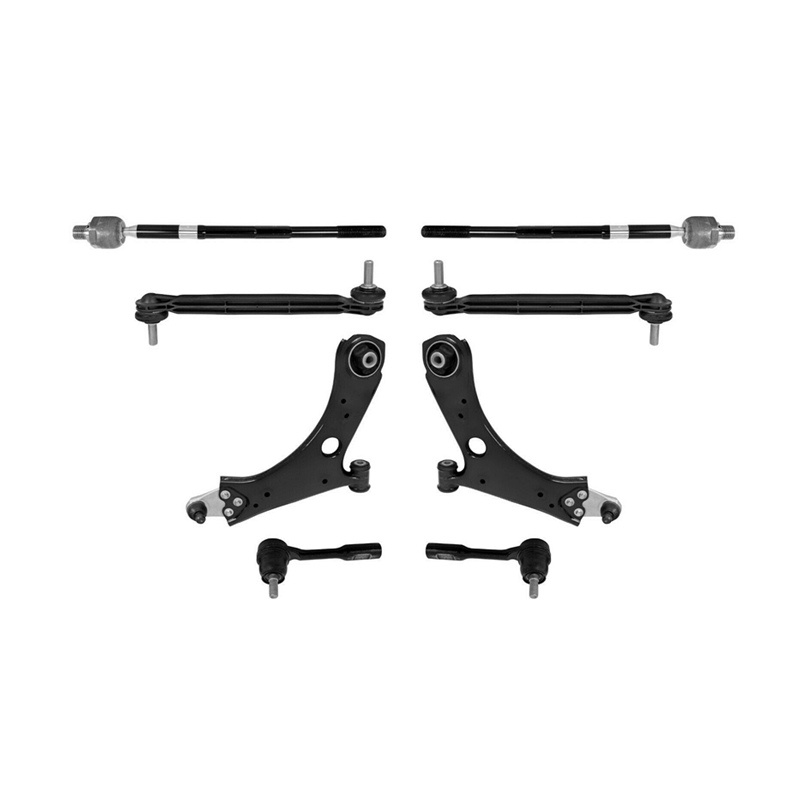Navigating The Chinese Market: The Struggles Of BMW, Porsche, And Other Auto Brands

Table of Contents
Intense Domestic Competition
The rise of powerful domestic Chinese auto brands presents a formidable challenge to established players. Companies like BYD, Nio, and Xpeng are rapidly gaining market share, fueled by several factors:
- Technological Advancements: Chinese automakers are investing heavily in electric vehicle (EV) technology, autonomous driving features, and advanced connectivity solutions, often exceeding the offerings of some international competitors.
- Aggressive Pricing Strategies: Domestic brands leverage their cost advantages to offer highly competitive pricing, often undercutting international luxury brands.
- Strong Government Support and Subsidies: The Chinese government actively supports the growth of its domestic auto industry through subsidies, tax breaks, and favorable policies, giving Chinese brands a significant advantage.
- Targeted Marketing Towards Chinese Consumer Preferences: Chinese brands excel at understanding and catering to the specific needs and preferences of the domestic market, creating vehicles and marketing campaigns that resonate deeply with local consumers.
This intense domestic competition forces international brands like BMW and Porsche to constantly innovate, adapt their product offerings, and refine their marketing strategies to remain competitive and hold onto their market share in the face of this aggressive Chinese automakers push. They must leverage their brand heritage while also demonstrating a clear understanding of the evolving needs of the Chinese consumer.
Understanding Unique Chinese Consumer Preferences
The Chinese automotive market is not a monolithic entity. Consumer preferences are diverse and constantly evolving, demanding a nuanced approach from international brands. Key aspects include:
- Importance of Digital Marketing and Social Media Engagement: Reaching Chinese consumers requires a strong online presence and effective engagement across various social media platforms like WeChat and Weibo.
- Demand for Advanced Features: Chinese consumers exhibit a strong preference for vehicles equipped with cutting-edge technology, including autonomous driving features, advanced driver-assistance systems (ADAS), and electric powertrains.
- Preference for Specific Car Sizes and Styles: The preference for specific vehicle sizes and styles often differs significantly from Western markets, reflecting the unique infrastructure and lifestyle preferences in China.
- The Influence of Social Media Endorsements and Online Reviews: Online reviews and social media influencer marketing play a crucial role in shaping consumer perception and purchase decisions.
BMW and Porsche's success in China hinges on their ability to adapt to these evolving preferences. Simply exporting their existing models and marketing campaigns won't suffice. They need to deeply understand Chinese consumer behavior and tailor their products and marketing strategies accordingly, focusing on luxury car preferences within the digital sphere.
Navigating Regulatory Hurdles and Infrastructure
Navigating the complex regulatory landscape in China is a critical challenge for international auto brands. This includes:
- Strict Emission Standards and the Transition to Electric Vehicles: China is aggressively pushing for the adoption of electric vehicles, imposing increasingly stringent emission standards that require significant investment in research and development and adaptation of production lines.
- Import Tariffs and Their Impact on Pricing: High import tariffs on foreign vehicles significantly increase their prices, making them less competitive compared to domestically produced cars.
- Challenges with Establishing and Maintaining a Robust Dealer Network: Building and managing a comprehensive and effective dealer network across China's vast geographical area presents significant logistical and operational challenges.
- The Impact of Local Content Requirements: Regulations mandating a certain percentage of locally sourced components can increase production costs and complexity.
These factors directly impact profitability and operational efficiency. Addressing China automotive regulations effectively is paramount for long-term success. The lack of robust EV infrastructure in certain areas further complicates the transition to electric vehicles.
The Supply Chain Conundrum
Managing the supply chain within China presents unique complexities. Geopolitical risks, potential pandemic-related disruptions, and the need for resilient and adaptable supply chain strategies are all critical considerations. Securing a reliable supply of parts and materials, while mitigating potential disruptions, is essential for maintaining production and meeting consumer demand.
Adapting Marketing and Sales Strategies
Success in China requires tailored marketing and sales strategies that resonate with local consumers. This includes:
- Importance of Localization in Advertising and Communication: Marketing materials must be localized to reflect cultural nuances and resonate with the target audience.
- Building Strong Relationships with Local Dealers and Distributors: Establishing strong partnerships with local dealers and distributors is crucial for effective market penetration and after-sales service.
- Leveraging Digital Marketing Channels Effectively: Mastering the use of Chinese digital platforms is essential for reaching and engaging target consumers.
- Understanding the Importance of Face-to-Face Engagement and Building Trust: Building trust and personal connections with potential customers remains a crucial aspect of the sales process in China.
BMW and Porsche's ability to effectively implement these strategies will determine their long-term success in China. A robust China marketing strategy, coupled with savvy automotive sales China techniques, is imperative.
Conclusion
Navigating the Chinese market presents significant challenges for international auto brands like BMW and Porsche. Intense domestic competition, understanding unique consumer preferences, navigating regulatory hurdles and infrastructure limitations, and managing complex supply chains all require careful consideration. Adapting marketing and sales strategies to resonate with Chinese consumers is paramount for success. To master the Chinese market and gain a competitive edge, international brands must invest in localized strategies, technological innovation, and robust supply chain resilience. Learn more about the intricacies of penetrating the Chinese market and discover how to achieve success in the Chinese market. Mastering the Chinese market requires a deep understanding of its nuances – are you ready to take on the challenge?

Featured Posts
-
 7 17
May 26, 2025
7 17
May 26, 2025 -
 Find Your Perfect Pair Best Nike Running Shoes For 2025
May 26, 2025
Find Your Perfect Pair Best Nike Running Shoes For 2025
May 26, 2025 -
 A Hat Trick For The Ages Van Der Poel Dominates Paris Roubaix Again
May 26, 2025
A Hat Trick For The Ages Van Der Poel Dominates Paris Roubaix Again
May 26, 2025 -
 F1 Drivers Over 40 A Retrospective Analysis Of Success And Failure
May 26, 2025
F1 Drivers Over 40 A Retrospective Analysis Of Success And Failure
May 26, 2025 -
 Link Live Streaming Moto Gp Argentina 2025 Saksikan Balapan Dini Hari
May 26, 2025
Link Live Streaming Moto Gp Argentina 2025 Saksikan Balapan Dini Hari
May 26, 2025
Latest Posts
-
 Comparatif Samsung Galaxy S25 256 Go Vs Concurrents A 775 E
May 28, 2025
Comparatif Samsung Galaxy S25 256 Go Vs Concurrents A 775 E
May 28, 2025 -
 18000
May 28, 2025
18000
May 28, 2025 -
 6000
May 28, 2025
6000
May 28, 2025 -
 Meilleur Prix Samsung Galaxy S25 512 Go 985 56 E
May 28, 2025
Meilleur Prix Samsung Galaxy S25 512 Go 985 56 E
May 28, 2025 -
 Le Samsung Galaxy S25 256 Go A 775 E Vaut Il Le Coup
May 28, 2025
Le Samsung Galaxy S25 256 Go A 775 E Vaut Il Le Coup
May 28, 2025
